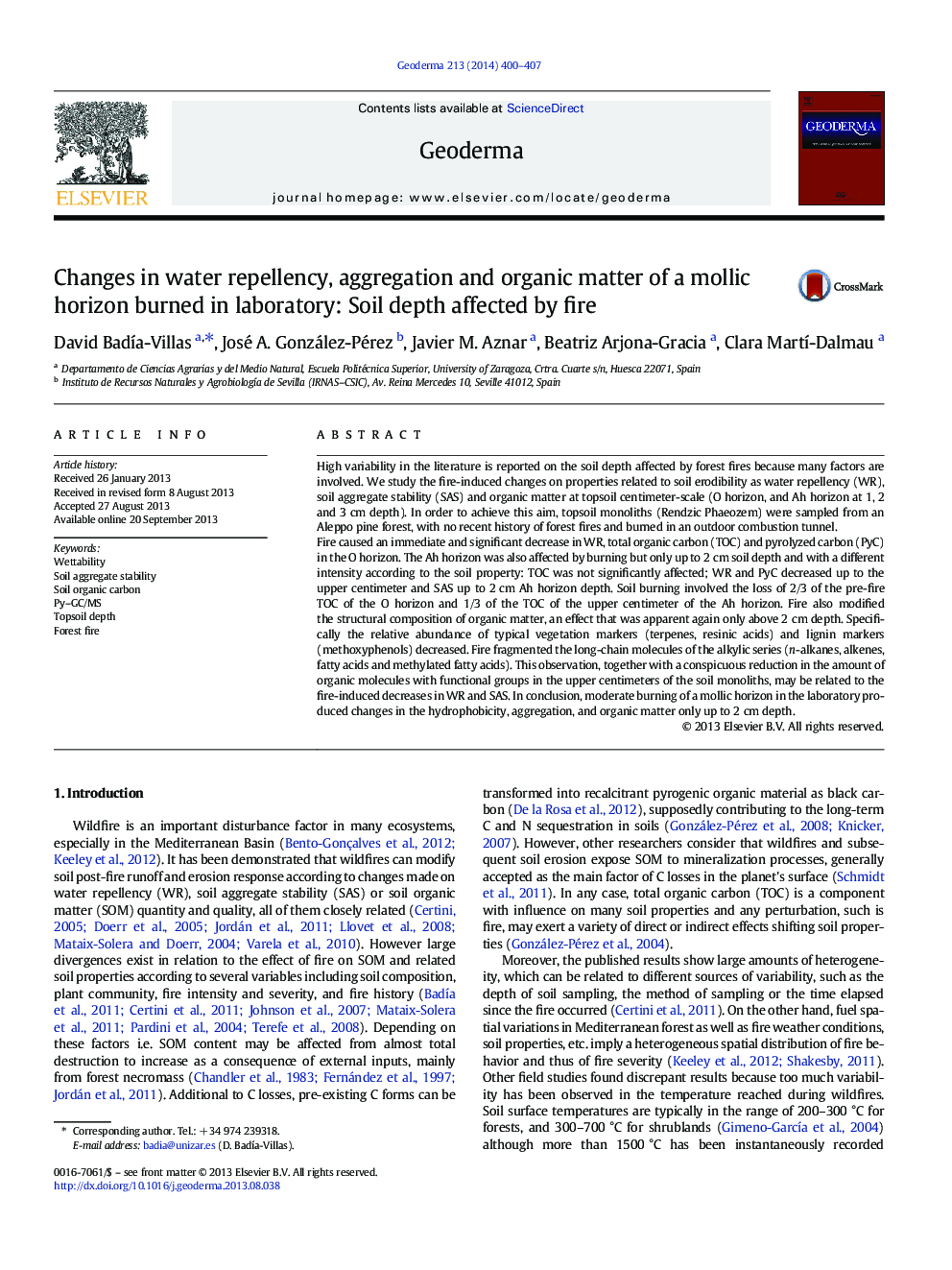| کد مقاله | کد نشریه | سال انتشار | مقاله انگلیسی | نسخه تمام متن |
|---|---|---|---|---|
| 6408997 | 1629479 | 2014 | 8 صفحه PDF | دانلود رایگان |
• Fire produce: A decrease in WR, TOC and PyC in the O-horizon, A decrease in WR and PyC (up to 1 cm of Ah) and SAS (up to 2 cm), The elimination of almost all pyrosylates in the O-horizon and the 1st cm of Ah, The fragmentation of alkylic chains (specially alkenes) up to 2 cm soil depth.
• No changes are found below 2 cm soil depth of the Ah mollic horizon due to fire.
High variability in the literature is reported on the soil depth affected by forest fires because many factors are involved. We study the fire-induced changes on properties related to soil erodibility as water repellency (WR), soil aggregate stability (SAS) and organic matter at topsoil centimeter-scale (O horizon, and Ah horizon at 1, 2 and 3 cm depth). In order to achieve this aim, topsoil monoliths (Rendzic Phaeozem) were sampled from an Aleppo pine forest, with no recent history of forest fires and burned in an outdoor combustion tunnel.Fire caused an immediate and significant decrease in WR, total organic carbon (TOC) and pyrolyzed carbon (PyC) in the O horizon. The Ah horizon was also affected by burning but only up to 2 cm soil depth and with a different intensity according to the soil property: TOC was not significantly affected; WR and PyC decreased up to the upper centimeter and SAS up to 2 cm Ah horizon depth. Soil burning involved the loss of 2/3 of the pre-fire TOC of the O horizon and 1/3 of the TOC of the upper centimeter of the Ah horizon. Fire also modified the structural composition of organic matter, an effect that was apparent again only above 2 cm depth. Specifically the relative abundance of typical vegetation markers (terpenes, resinic acids) and lignin markers (methoxyphenols) decreased. Fire fragmented the long-chain molecules of the alkylic series (n-alkanes, alkenes, fatty acids and methylated fatty acids). This observation, together with a conspicuous reduction in the amount of organic molecules with functional groups in the upper centimeters of the soil monoliths, may be related to the fire-induced decreases in WR and SAS. In conclusion, moderate burning of a mollic horizon in the laboratory produced changes in the hydrophobicity, aggregation, and organic matter only up to 2 cm depth.
Figure optionsDownload as PowerPoint slide
Journal: Geoderma - Volume 213, January 2014, Pages 400–407
